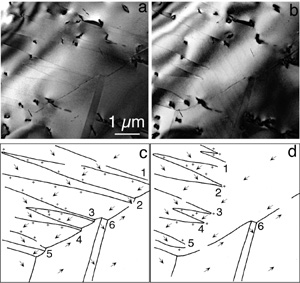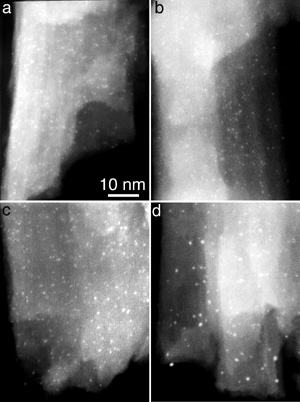 | Proposed and demonstrated the high-angle annular detector for STEM Z contrast
|
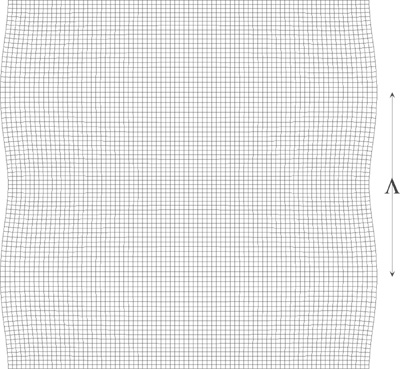 | Highlighted the importance of elastic relaxation as a source of contrast in modulated thin films |
 | Identified a new deactivation mechanism in Pt/K-zeolite L aromatization catalysts
|
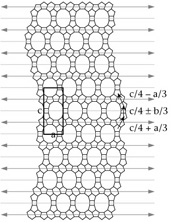 | Unraveled the structure of zeolite beta
|
 | Developed recursion algorithm for computing diffraction from faulted crystals During the course of the zeolite beta work, I developed a method of computing powder x-ray diffraction patterns in the presence of planar faults. The method exploits recursion and is well-adapted to computer implementation. I am the primary author of the fortran computer program DIFFaX that has now been used by hundreds of researchers to simulate diffraction in planar-faulted crystals. The DIFFaX source code, with manual, is supplied free of charge. |
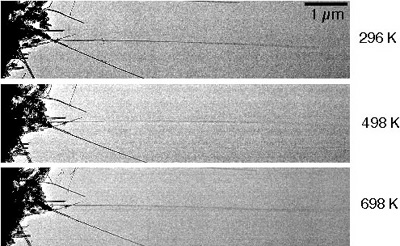 | Use of thermal vibrations to measure Young's modulus of carbon nanotubes
|
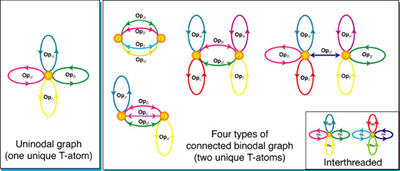 | Combinatorial computer method for enumerating zeolite frameworks
|
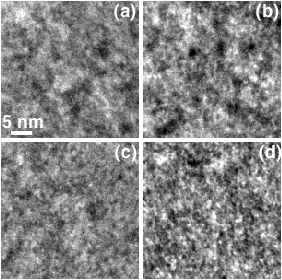 | Developed the Fluctuation Microscopy Technique: A probe of medium range order in amorphous materials
|
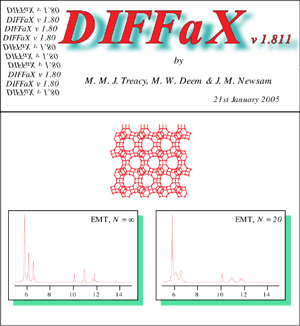 | Characterization of stacking fault patterns in faujasitic zeolites using TEM and DIFFaX simulations The tools I developed for studying zeolite beta where applied to studying the faulting distributions in the various faujasite-related synthetic zeolites, ranging from pure cubic FAU framework to the pure hexagonal EMT framework. Using TEM and DIFFaX, I showed that the faulting in these materials is clustered. Using the strain relaxation model, I showed that the strains associated with the stacking faults were reduced when faults were clustered. I won the prestigious Breck Award (awarded triennially by the International Zeolite Association) in 1996 for this work. |
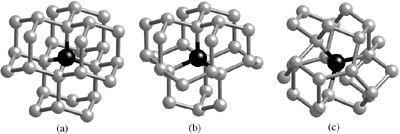 | Schläfli Cluster methods for modeling amorphous tetrahedral models Borrowing from my work on zeolite topologies, I have developed a simple topological tool for investigating medium-range order in models of amorphous tetrahedral semiconductors. Schläfli clusters are compact topological descriptors of the local connectivity around each atom. (It later emerged that they are similar to the earlier “local cluster” concept of L. W. Hobbs et al.) I have proposed that the diamond Schläfli cluster is the minimum atomic configuration that can be called “topologically cubic”. Searching for such clusters is a fast effective tool for detecting medium range order in models of amorphous semiconductors. This work is in progress. |
| In-situ TEM observations of domain switching in ferroelectric thin films. In collaboration with A. Krishnan, we made in-situ TEM observations of domain wall motion in thin single crystal ferroelectric materials under applied electric fields. I designed, and had built, a special TEM specimen holder that can heat, apply electric fields and shine light onto a sample. Our observations showed that domain walls do not move as rigid membranes. Instead, we proposed that domain walls move by allowing charged ripples to propagate along them. We developed a simple Landau-Ginsburg Free energy argument showing that ripples have a reduced barrier to switching. Ripples enable wall motion by a mechanism analogous to that for dislocation motion in crystal slip. We also showed that some domain walls are locked under certain electric field directions, representing an inherent contribution to ferroelectric fatigue and imprint. |
 | Developed a model of fatigue in thin-film PZT ferroelectrics. In collaboration with postdoctoral student Kitae Park, and Shobo Bhattacharya at NECI, Princeton, we developed a simple two-stage model of ferroelectric fatigue in thin films of PZT sandwiched between Pt electrodes and supported on Si. Such devices are used in fast, low-power, non-volatile memories. By a combination of electrical measurements, cross-section TEM and modelling, we showed that; (i) Early in the life of a ferroelectric, stresses between the electrodes and PZT cause microcracking at the interface. This acts to weaken the applied electric fields (because of the air gap effect), and sets the stage for the the next step. (ii) Later, defects extending into the PZT layers screen the applied electric fields, inhibiting the ferroelectric switching, and eventually leading to short circuits. A thin conducting (non-ferroelectric) oxide layer between the PZT and electrodes almost eliminates fatigue completely by acting as a buffer layer for elastic stresses, and providing a stronger bonding between the electrode and the ferroelectric itself. We developed a two-parameter phenomenological model that modelled the decay, and which allowed the prediction of device fatigue behavior as a function of temperature and applied voltage. |
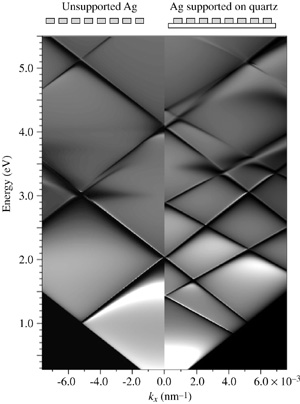 | Developed an effective dynamical diffraction Bloch wave explanation for the anomalous transmission of light through thin hole arrays. When light is shone on a thin metallic film, which has a periodic array of sub-optical wavelength diameter holes drilled through it, anomalously high intensities are transmitted at certain wavelengths. That is, more light gets through than would be expected from the hole area. The current popular explanation is that surface plasmons “guide” the light through the holes. I have developed an alternative dynamical diffraction Bloch wave theory that completely explains the anomalous transmission, and does so without resorting to special pleading about surface plasmons. The theory is fully general for 3-dimensional periodic gratings, and unlike the other theories, makes no simplifications or approximations to Maxwell’s equations. |
 | Designability of graphitic carbon cones. In collaboration with Ebbesen, Krishnan and DuJardin, we described in the journal Nature a special carbon black sample that comprised a high density of graphitic disks and cones. Our TEM analysis confirmed that the five topologically-allowed conical forms all occur, but with a preponderance of the 60° cone-angle variety. I explain this distribution with a simple model of graphitization. I point out that there are many more ways to circumscribe carbon rings around the tip of a cone than there are ways to imbed the same rings in planar graphite. For topologically flexible seeds, graphitic cones are more “designable” than planar graphite. With an assumed seed distribution, the model explains the observed cone distribution – highlighting the role of entropy in the formation of curved graphitic structures. |
Back to Mike Treacy's homepage
Last updated July 2nd, 2005.
You are visitor number
